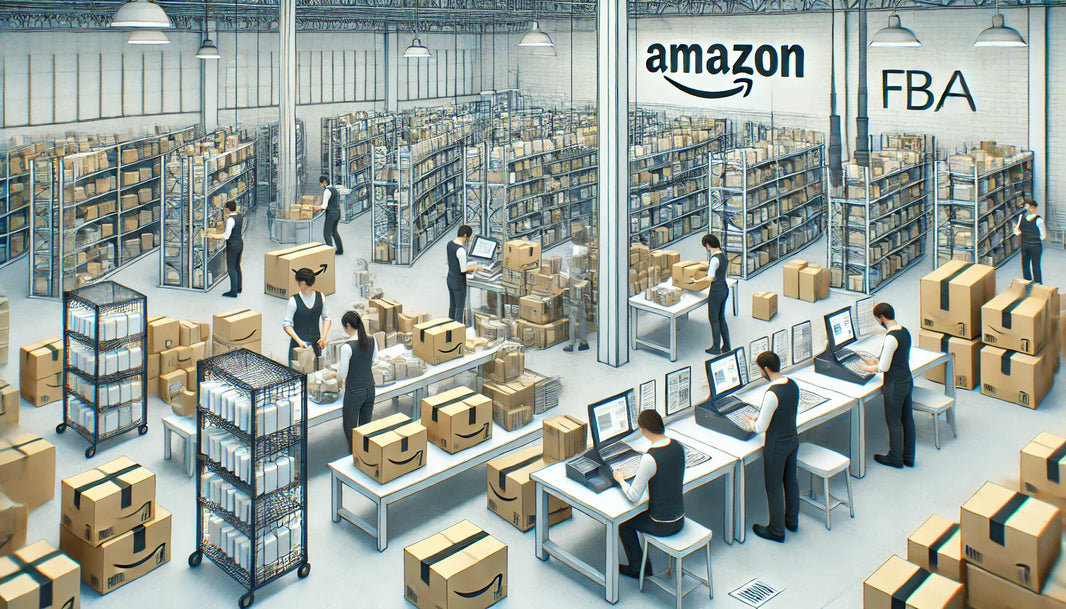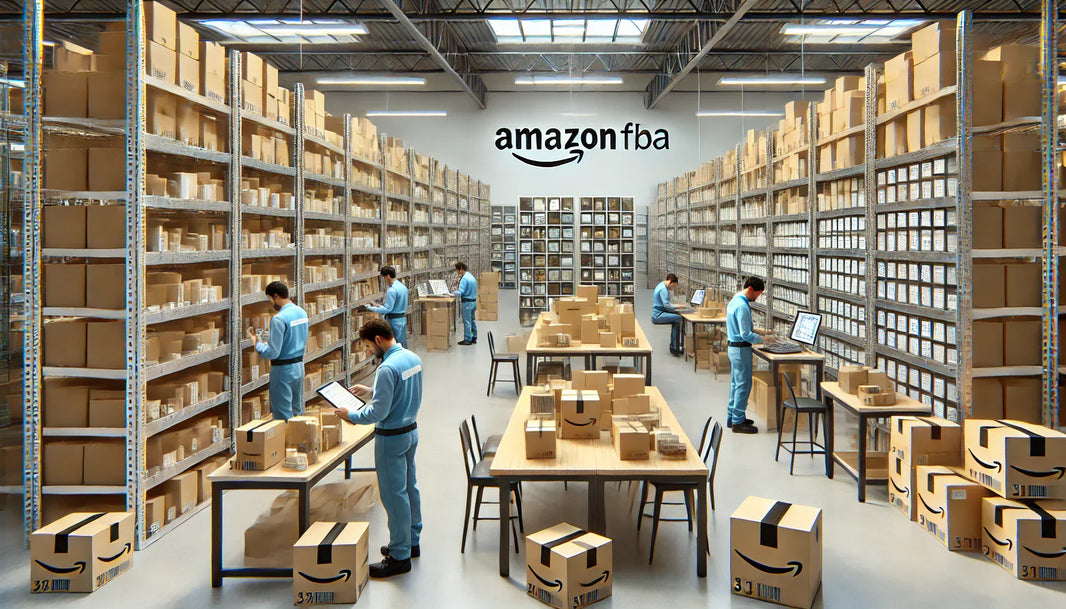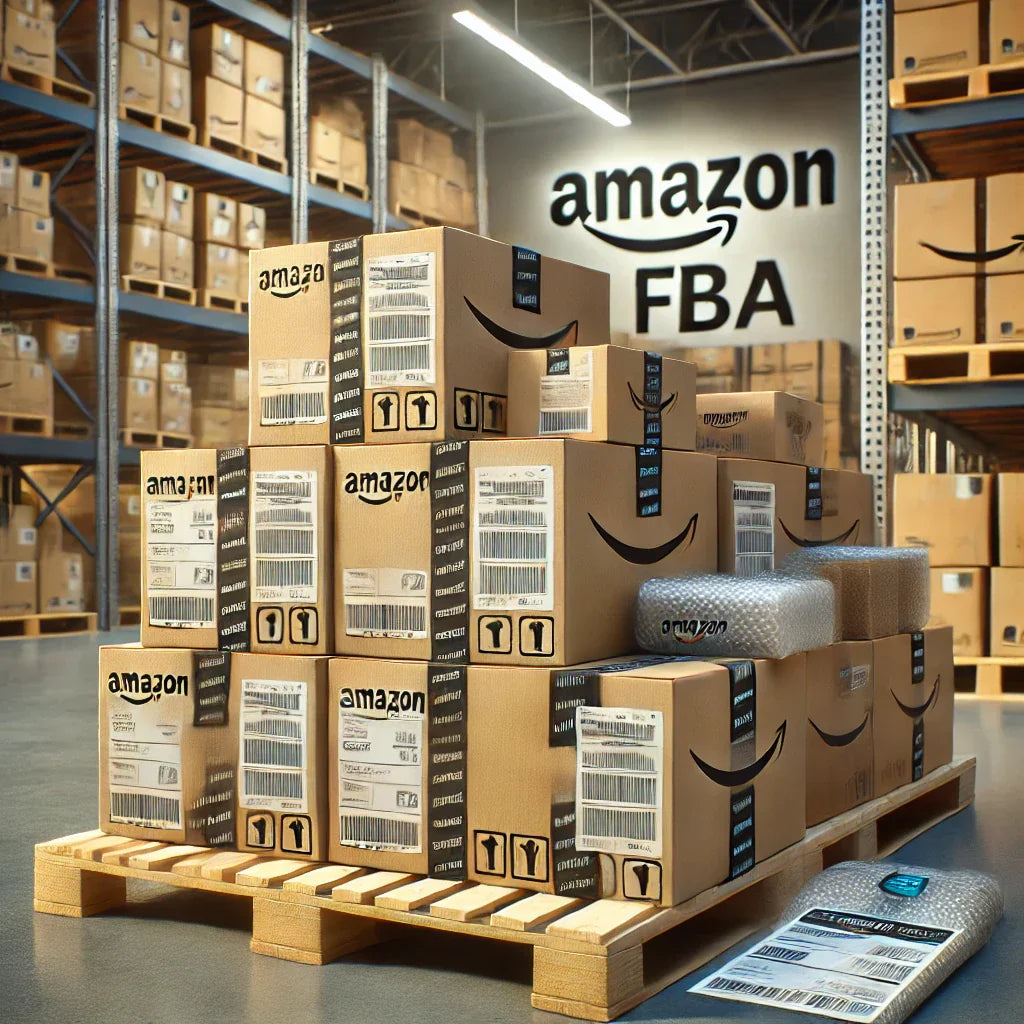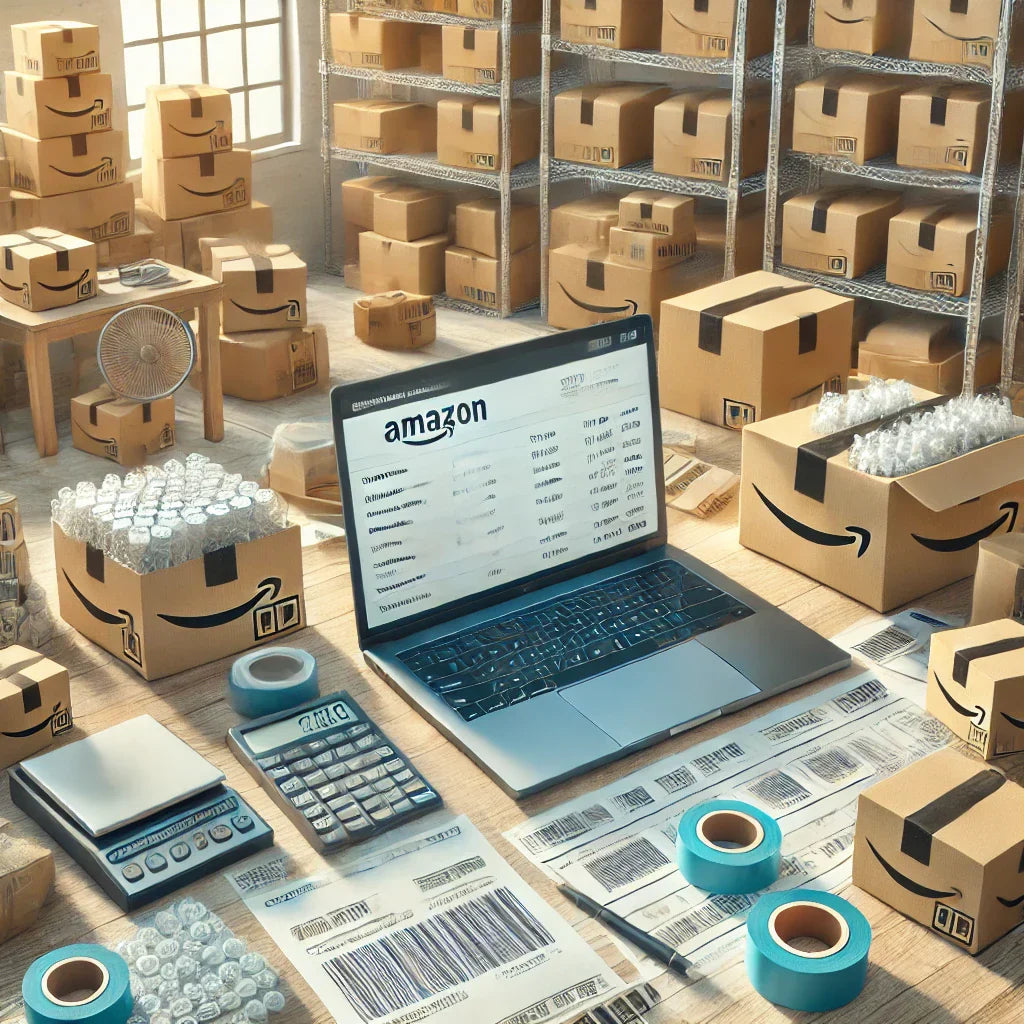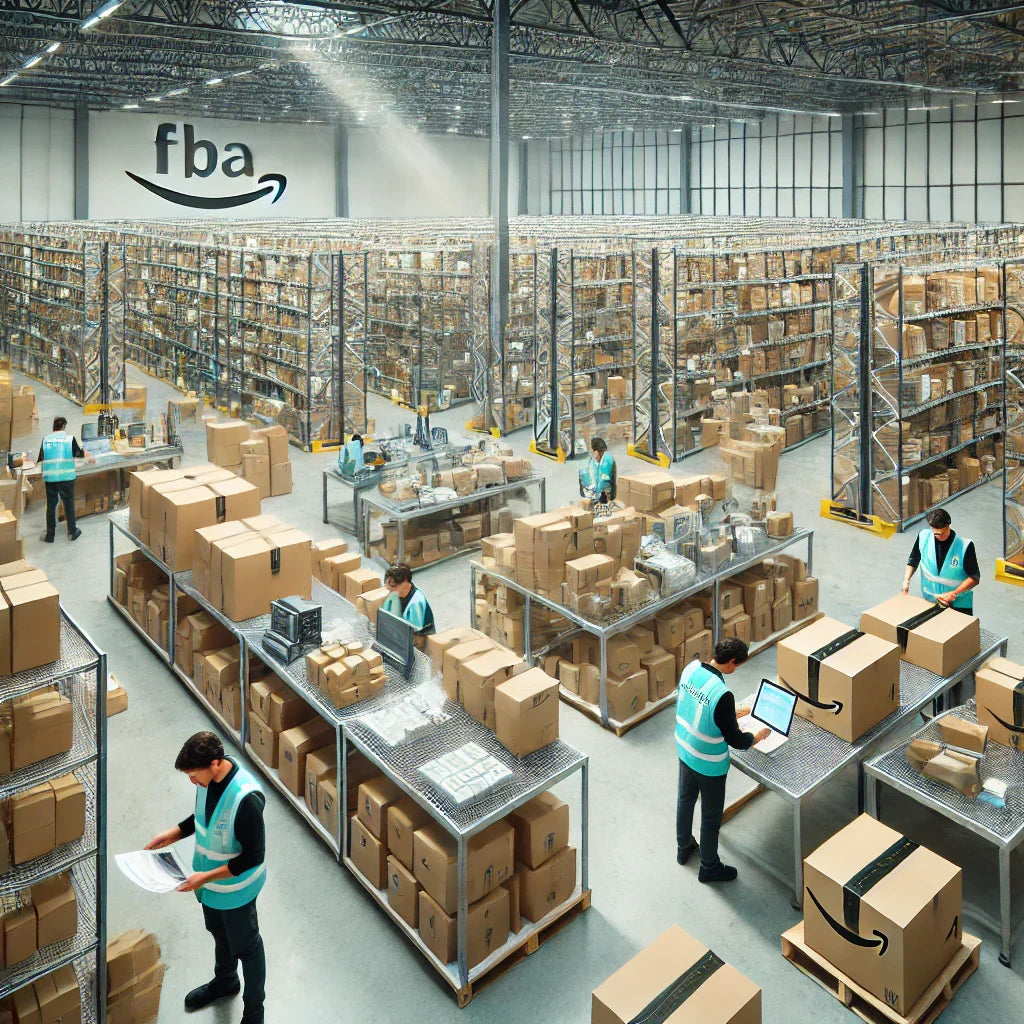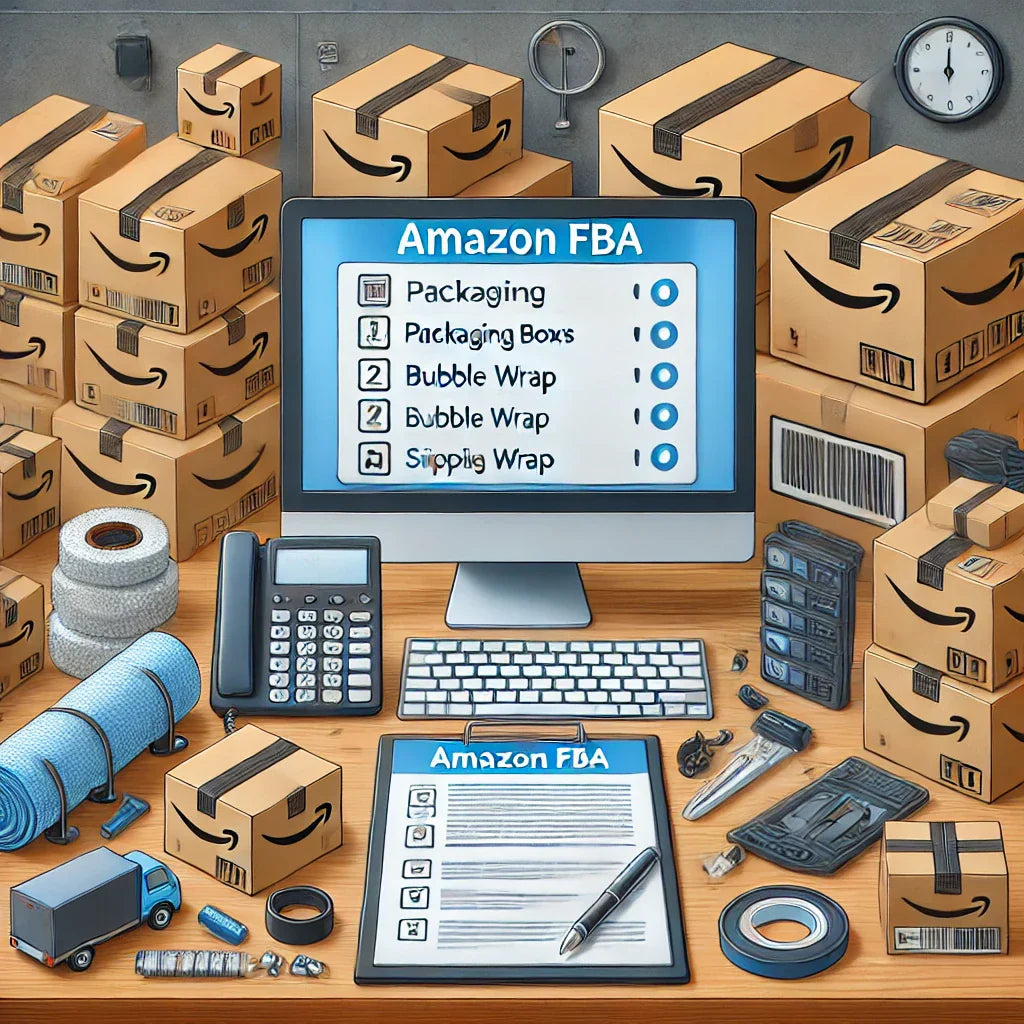In today’s rapidly evolving business landscape, efficient supply chain management is critical for companies aiming to meet customer demands and maintain a competitive edge. One of the key strategies that many businesses use to streamline logistics and distribution is third-party logistics, commonly known as 3PL. But what exactly is 3PL, and how does it help businesses optimize their operations? In this article, we’ll explore the fundamentals of third-party logistics, including its core functions, benefits, and why companies across industries increasingly rely on 3PL providers. From warehousing and inventory management to shipping and returns, understanding 3PL can be the key to unlocking a more efficient and cost-effective supply chain.

What is Third-Party Logistics (3PL)?
Third-party logistics (3PL) refers to the outsourcing of logistics and supply chain management functions to specialized external providers. Companies partner with 3PL providers to handle various aspects of logistics, such as warehousing, inventory management, order fulfillment, and shipping. By delegating these responsibilities, businesses can focus more on their core competencies, like product development and customer service, while leveraging the expertise of logistics professionals.
How 3PL Works: The Core Functions
3PL providers offer a suite of services tailored to manage different parts of the supply chain. Let’s break down some of the essential functions involved:
- Warehousing and Storage: Many 3PL providers own or operate warehouse spaces where they store goods on behalf of their clients. This function allows businesses to scale their storage needs as demand fluctuates without having to invest in their own warehouse facilities.
- Inventory Management: 3PL providers use advanced inventory management systems to track stock levels, manage reorders, and prevent stockouts. This transparency helps companies keep their supply chain lean and responsive to demand changes.
- Order Fulfillment and Processing: A key responsibility of many 3PLs is handling the entire fulfillment process, from picking items in the warehouse to packing them and preparing shipments.
- Shipping and Distribution: 3PL companies typically have relationships with multiple carriers, allowing them to negotiate better shipping rates. This network and expertise enable them to provide more efficient and cost-effective shipping solutions than businesses could manage on their own.
- Returns Management: Handling returns can be time-consuming and costly. 3PLs often provide reverse logistics services to process returns, restock items, and handle the necessary paperwork to streamline the process for both the business and its customers.
Benefits of Using a 3PL Provider
For companies considering outsourcing their logistics, 3PL offers a variety of benefits that can positively impact both operational efficiency and the bottom line.
Cost Savings
A significant advantage of using 3PL services is cost savings. By outsourcing logistics, businesses can avoid the high costs associated with owning and maintaining warehouse facilities, hiring specialized staff, and investing in logistics technology. Furthermore, 3PL providers can leverage their established networks to secure better shipping rates, reducing costs on a per-shipment basis.
Scalability and Flexibility
One of the standout features of 3PL is scalability. Whether a business is growing rapidly or facing seasonal peaks in demand, 3PL providers offer the flexibility to scale storage and shipping capacity accordingly. This adaptability means that companies can respond swiftly to market changes without the burden of long-term fixed costs.
Improved Customer Experience
3PL providers often specialize in fast and accurate order fulfillment, which is crucial for maintaining high levels of customer satisfaction. Their expertise in logistics ensures that orders are processed efficiently, shipped on time, and arrive in perfect condition. This focus on reliable delivery contributes to a positive brand reputation and higher customer loyalty.
Types of 3PL Providers
The world of 3PL providers is diverse, with companies specializing in different areas of logistics. Understanding these types can help businesses select the right partner to meet their needs.
Standard 3PL Providers
These providers offer basic logistics services such as warehousing and distribution. They are a good fit for companies seeking straightforward storage and shipping solutions without specialized requirements.
Service Developers
Service developers provide a broader range of services beyond warehousing and shipping, including IT solutions for inventory tracking, analytics, and reporting. They cater to companies looking for integrated logistics solutions with added technological support.
Customer Adapters
Customer adapters work closely with clients to integrate customized logistics solutions tailored to the specific needs of a business. This model is ideal for companies with complex logistics requirements that require a highly personalized approach.
Customer Developers
The most advanced type of 3PL, customer developers take full control of a company’s logistics operations. These providers become a seamless extension of the client’s business, managing everything from warehousing to customer service. This type of 3PL is usually best suited to larger companies that require fully outsourced logistics.
Key Considerations When Choosing a 3PL Provider
Selecting the right 3PL partner is critical to ensure smooth logistics operations. Here are several factors businesses should consider:
Industry Expertise
Choosing a provider with industry-specific expertise can make a significant difference in service quality. For example, a 3PL specializing in food logistics will have the necessary resources and knowledge to handle perishable goods with care and efficiency.
Technological Capabilities
Modern logistics rely heavily on technology. 3PL providers with advanced systems for inventory tracking, data analytics, and order management offer greater transparency and operational efficiency. Integration with the client’s own systems is also essential to ensure real-time visibility.
Location and Network Reach
The location of a 3PL provider’s facilities can impact shipping times and costs. For businesses with a large customer base in specific regions, choosing a provider with strategically located warehouses can reduce transit times and optimize distribution.
Flexibility and Scalability
A good 3PL partner should be able to adapt to fluctuations in demand. For businesses expecting growth or dealing with seasonal variations, it’s essential to work with a 3PL that can scale resources up or down as needed.
Challenges of Using 3PL Services
While 3PL services offer many benefits, they also present certain challenges. Here are a few common ones:
Loss of Direct Control
Outsourcing logistics means relinquishing some control over the supply chain. Businesses may find it challenging to maintain the same level of direct oversight over warehousing, inventory, and shipping.
Integration Complexities
Seamless integration between a business’s systems and those of the 3PL provider can be complex. Without proper integration, visibility into stock levels, order tracking, and performance metrics may be limited.
Dependency on the Provider’s Performance
Reliance on a 3PL provider means that any disruptions or delays within their operations can affect the client’s business. Companies must establish strong communication and service-level agreements to mitigate these risks.
The Future of 3PL: Trends and Innovations
The 3PL industry is continuously evolving, driven by advancements in technology and shifting consumer expectations. Here are some trends that are shaping the future of third-party logistics:
Increased Use of Automation and AI
Automation and AI are transforming logistics operations. Many 3PL providers are investing in automated warehouses, robotic picking systems, and AI-driven forecasting tools to enhance efficiency and accuracy.
Sustainable Logistics Solutions
As consumers become more environmentally conscious, 3PL providers are adopting sustainable practices. These include using eco-friendly packaging, optimizing routes to reduce fuel consumption, and investing in electric delivery vehicles.
Enhanced Data Analytics and Reporting
With data-driven insights, 3PL providers can offer their clients greater visibility and more accurate forecasting. This focus on analytics helps companies optimize their supply chains based on real-time data, improving overall performance.

How 3PL Empowers E-commerce Businesses
For e-commerce businesses, 3PL offers solutions tailored to the demands of online retail. Here’s how 3PL empowers e-commerce companies:
Efficient Order Fulfillment
E-commerce businesses rely on timely order fulfillment to meet customer expectations. 3PL providers streamline this process, reducing fulfillment time and ensuring accurate deliveries.
Advanced Inventory Management
With fluctuating demand in e-commerce, effective inventory management is essential. 3PL providers employ advanced software to help e-commerce companies maintain optimal stock levels, preventing overselling and stockouts.
Scalability During Peak Seasons
During high-demand periods, such as the holiday season, 3PL providers offer the flexibility e-commerce businesses need to handle increased order volumes without sacrificing service quality.
Case Studies: Real-World Applications of 3PL in Different Industries
To better understand the impact of 3PL, let’s look at how companies across different industries leverage third-party logistics providers to streamline their supply chains.
Case Study 1: E-commerce Brand Expansion with 3PL
An emerging e-commerce brand in the apparel industry was struggling to manage inventory and order fulfillment as demand for their products grew. Initially, the company handled fulfillment in-house but quickly found that peak seasons created bottlenecks. Partnering with a 3PL provider enabled the brand to scale its operations without the need to build out physical warehouses or hire additional staff. The 3PL provider managed inventory in a network of warehouses across key regions, which significantly reduced shipping times. The company saw a 30% improvement in order fulfillment speed and a 20% reduction in shipping costs.
Case Study 2: Food and Beverage Industry
A mid-sized company in the food and beverage sector needed a reliable way to handle perishable goods, a challenge due to strict regulations on handling, storage, and transportation. The company partnered with a 3PL provider specializing in cold chain logistics, which managed their entire supply chain from storage to distribution. With the help of temperature-controlled warehouses and real-time tracking technology, the 3PL provider ensured that products arrived fresh. This partnership allowed the food company to expand its distribution radius while maintaining product quality and compliance, ultimately boosting customer satisfaction and market reach.
Case Study 3: Automotive Industry and Just-in-Time Inventory
An automotive parts supplier faced challenges with inventory management and delivery precision, both of which are crucial to maintain manufacturing flow. A 3PL provider with expertise in just-in-time (JIT) logistics was brought in to manage warehousing, inventory tracking, and delivery schedules. This strategic partnership helped the supplier reduce excess inventory, minimize warehouse costs, and improve delivery precision, resulting in a 25% reduction in logistics expenses and enhanced reliability for its manufacturing partners.
Industry-Specific Applications of 3PL
Each industry has unique logistical needs, and 3PL providers often tailor their services to meet these demands. Here are some industry-specific applications:
Retail and E-commerce
For retail and e-commerce, fast shipping and inventory flexibility are essential. Many 3PLs serving this sector offer multi-channel fulfillment, which integrates orders from various platforms, such as an online store and marketplaces, into a single streamlined process. Furthermore, 3PLs specializing in e-commerce fulfillment may offer value-added services like custom packaging, gift-wrapping, or handling returns—helping brands create a memorable customer experience.
Pharmaceuticals and Healthcare
The pharmaceutical and healthcare industries demand strict compliance with regulatory standards for temperature control, product tracking, and secure storage. 3PL providers in this sector often have specialized facilities, like climate-controlled warehouses and advanced tracking systems, to ensure that sensitive products such as medications and medical devices are stored and transported safely. Compliance with Good Distribution Practices (GDP) and the ability to track products at each stage of the supply chain is essential.
Manufacturing and Heavy Industries
In manufacturing, 3PL providers often play a critical role in ensuring the timely delivery of raw materials and parts needed for production. Many manufacturers rely on just-in-time (JIT) inventory models, which require precision and minimal inventory on hand. 3PLs in this industry focus on optimizing inbound logistics, managing bulk shipments, and providing transportation and freight management expertise to reduce downtime in production.
Key Technologies Driving 3PL Success
Technology plays a vital role in modern 3PL operations, helping providers improve efficiency, reduce costs, and provide better service. Here’s an overview of some key technological innovations shaping the future of 3PL.
Warehouse Automation
Automated warehouses use robotic systems to streamline tasks such as picking, packing, and sorting. By reducing human labor requirements, automation helps 3PL providers increase order accuracy, lower costs, and shorten processing times. Automated guided vehicles (AGVs) and conveyor systems, for instance, are commonly used to transport items across a warehouse floor, making the process faster and reducing bottlenecks.
Advanced Inventory Management Systems (IMS)
Sophisticated inventory management systems provide real-time visibility into stock levels, track inventory movement, and generate alerts for reordering. These systems can be integrated with a company’s existing software to ensure seamless data flow between the 3PL provider and the client. Advanced IMS technology helps businesses maintain optimal stock levels, avoid stockouts, and respond to demand fluctuations more effectively.
Artificial Intelligence and Predictive Analytics
AI and predictive analytics are increasingly used by 3PL providers to forecast demand, optimize routing, and improve decision-making. AI algorithms analyze historical data to predict peak times, allowing 3PLs to prepare for high-demand periods and adjust resource allocation accordingly. Predictive analytics also help 3PLs make proactive adjustments to transportation and warehousing, saving costs and improving service reliability.
Real-Time Tracking and GPS
Real-time tracking systems powered by GPS and Internet of Things (IoT) devices allow 3PL providers and their clients to monitor shipments at every stage of the journey. This transparency is essential for industries where timely delivery is critical, such as healthcare or food. GPS tracking provides precise location data, while IoT sensors can monitor environmental conditions, such as temperature, humidity, and vibration, which is particularly useful for perishable or fragile goods.
Blockchain for Transparency and Security
Blockchain technology is gaining traction in the logistics industry for its ability to provide a secure, transparent record of transactions. In 3PL, blockchain enables real-time updates to all stakeholders in the supply chain, reducing the risk of fraud and errors. This is especially valuable in industries like pharmaceuticals, where product traceability is crucial to prevent counterfeiting.
Best Practices for Working with a 3PL Provider
A successful partnership with a 3PL provider requires clear communication, strategic planning, and regular performance evaluation. Here are some best practices for businesses looking to maximize the benefits of their 3PL relationship:
Define Your Goals and Set Clear Expectations
Before choosing a 3PL provider, it’s essential to define what you hope to achieve through outsourcing. Goals might include cost savings, faster delivery times, or improved scalability. Once your objectives are clear, communicate them to potential 3PL providers to ensure alignment. Establishing clear expectations from the start can prevent misunderstandings and improve partnership effectiveness.
Choose a Provider with Industry-Specific Expertise
Different industries have unique logistics requirements, so choosing a 3PL with experience in your sector can be beneficial. For instance, if you operate in the healthcare industry, you’ll need a 3PL familiar with regulatory requirements and the handling of sensitive products. Conducting thorough research and asking about a provider’s industry experience can help you find a partner with the right expertise.
Establish Key Performance Indicators (KPIs)
To measure the success of your 3PL partnership, establish KPIs that reflect your logistics goals. Common KPIs include order accuracy, on-time delivery rate, inventory turnover, and customer satisfaction. Reviewing these metrics regularly can help you assess the 3PL provider’s performance and identify areas for improvement.
Regularly Communicate and Review Performance
Effective communication is key to a strong partnership with a 3PL provider. Schedule regular meetings to discuss performance, review KPIs, and address any challenges. This ongoing dialogue will help ensure that both parties are aligned on expectations and can adapt to changing business needs. Additionally, a periodic review of service-level agreements (SLAs) can help maintain accountability.
Integrate Your Systems
System integration allows for seamless information flow between your business and the 3PL provider. Ensure that inventory management, order processing, and customer service systems are well integrated to enable real-time data sharing. This transparency can improve inventory visibility, streamline order fulfillment, and provide a unified view of the entire supply chain.

How to Evaluate a 3PL Provider’s Service Quality
With so many 3PL options available, businesses need to carefully evaluate potential providers. Here are some tips for assessing a 3PL provider’s service quality:
Check Their Track Record and Client Testimonials
Researching a 3PL provider’s history and reading client testimonials can provide insights into their reliability and expertise. Look for case studies or client reviews to understand how the provider has handled similar challenges. A provider with a proven track record of delivering high-quality service can be a more reliable choice.
Assess Their Technological Capabilities
As technology becomes integral to logistics, assessing a 3PL provider’s technological capabilities is essential. Ask about the tools they use for inventory management, tracking, and data analytics. A provider that invests in technology can offer greater efficiency, transparency, and scalability.
Confirm Their Financial Stability
Logistics is capital-intensive, and financial stability is essential for a 3PL provider to maintain its operations and invest in necessary resources. Check for signs of financial strength, such as a long-standing client base, recent expansions, or investment in new technology. Financial stability can provide reassurance that the provider will remain a viable partner over the long term.
Evaluate Customer Service Quality
A 3PL provider should be responsive to your needs, especially if disruptions occur. Assess their customer service quality by discussing communication processes and response times. Choose a provider that offers reliable customer support and can address issues swiftly to minimize disruption.
How to Transition from In-House Logistics to 3PL
Transitioning from in-house logistics to a 3PL provider can be a significant shift. Here’s how to make the process smoother:
Conduct a Logistics Audit
Begin by conducting a logistics audit to understand your current processes, pain points, and cost structure.
Transitioning from In-House Logistics to 3PL: A Step-by-Step Guide
Transitioning from in-house logistics to a 3PL provider is a significant decision that requires careful planning to ensure a smooth handover and avoid service disruptions. Here’s a step-by-step guide on how to make the transition effective:
Step 1: Conduct a Comprehensive Logistics Audit
The first step is to assess your current logistics setup to understand your needs and identify inefficiencies. A logistics audit involves analyzing everything from warehousing, inventory turnover, order fulfillment times, and transportation costs. By documenting these metrics, you can pinpoint the pain points that a 3PL provider should address and estimate potential cost savings.
Benefits of a Logistics Audit:
- Enhanced Visibility: Get a clear picture of where inefficiencies lie, helping you decide which logistics functions are best outsourced.
- Data-Driven Insights: Collect data on delivery times, costs, and inventory issues that you can compare post-3PL transition.
- Goal Setting: Use audit results to set realistic goals with your 3PL provider, such as improving delivery speeds or reducing inventory carrying costs.
Step 2: Choose the Right 3PL Provider Based on Audit Insights
With a clear understanding of your logistics needs, you can select a 3PL provider that aligns with your operational goals. During the evaluation, focus on providers with expertise in the specific services you require, such as warehousing, freight forwarding, or inventory management. Consider providers with technology solutions that integrate seamlessly with your systems.
Step 3: Set Clear Expectations and Outline SLAs
Service-Level Agreements (SLAs) are crucial for setting expectations and defining the performance standards your 3PL provider must meet. Common metrics included in SLAs are:
- Order Accuracy Rate: Ensures minimal errors in order processing.
- On-Time Delivery Rate: Sets standards for timely delivery.
- Inventory Accuracy: Ensures stock levels are tracked accurately to prevent stockouts or excess.
Outlining these parameters helps prevent misunderstandings and provides a benchmark for assessing provider performance.
Step 4: Prepare a Data Migration and System Integration Plan
Transferring data from your systems to the 3PL provider’s platforms is essential to establish seamless information flow. Start with a detailed data migration plan that ensures all critical information—such as SKUs, customer data, and shipping information—is transferred securely. Integration with the provider’s Warehouse Management System (WMS) and Transportation Management System (TMS) will allow for real-time data updates, improving inventory visibility and tracking capabilities.
Step 5: Develop a Clear Communication Plan
Clear communication with your 3PL provider is essential, particularly during the initial stages of the partnership. Regular check-ins, progress reports, and escalation protocols should be established. Assign a liaison on your team to work directly with the 3PL provider to address issues promptly, track KPIs, and communicate updates.
Understanding the Cost Structure of 3PL Services
The costs associated with 3PL services vary depending on the range and complexity of services provided. Here’s a breakdown of common 3PL cost components:
1. Storage Fees
Storage fees are often based on the amount of warehouse space occupied by your products and are charged either by square footage or pallet. For e-commerce companies with high inventory turnover, providers may offer dynamic pricing options to reflect stock levels, which fluctuate based on seasonality or promotions.
2. Pick-and-Pack Fees
Pick-and-pack fees cover the labor and resources needed to locate items, pack them, and prepare them for shipment. This cost may vary depending on the size of the order and the complexity of packing (e.g., fragile or custom-packaged items). Many 3PLs offer tiered pricing based on order volume, allowing companies to benefit from lower per-order costs as volume increases.
3. Shipping Costs
Shipping is one of the most significant expenses in logistics, and 3PL providers often negotiate lower shipping rates due to their high volume. While companies benefit from these discounted rates, the exact cost will depend on the destination, size, and weight of the shipment, as well as the type of shipping service selected (e.g., ground, expedited).
4. Receiving Fees
Receiving fees cover the labor involved in handling incoming shipments, inspecting goods, and entering them into inventory. This cost is usually charged per pallet or per hour, depending on the provider’s fee structure.
5. Returns Processing
Returns processing, also known as reverse logistics, involves handling returned products, restocking, and preparing items for resale. The cost structure for returns can vary widely, as it depends on the complexity of the return process and the provider’s policies on handling damaged or unsellable items.
Specialized Services Offered by 3PL Providers
Many 3PL providers offer specialized services beyond basic storage and shipping. These services are particularly valuable for companies with unique logistics needs or those looking to enhance their customer experience.
Value-Added Services (VAS)
Value-added services refer to any extra services that go beyond traditional warehousing and fulfillment, tailored to meet specific business needs. Examples include:
- Kitting and Assembly: Some 3PLs can bundle multiple SKUs into a single kit or handle light assembly tasks. This is useful for subscription box companies or products that require assembly before shipping.
- Custom Packaging: 3PL providers may offer custom packaging solutions, allowing companies to personalize packages with branded materials or special inserts.
- Labeling and Quality Control: Providers can label items or conduct quality inspections before shipping, ensuring that only products meeting quality standards are sent to customers.
Freight Forwarding
3PL providers offering freight forwarding services manage the entire shipping process, from point of origin to destination. Freight forwarding can involve multiple modes of transportation, such as ocean, air, and land, and 3PLs often handle documentation, customs clearance, and shipment tracking.
Cross-Docking Services
Cross-docking involves transferring products directly from inbound trucks to outbound trucks, minimizing storage time and reducing warehouse space requirements. This method is particularly useful for perishable goods or products with high demand, as it speeds up delivery times.
![]()
Advanced Strategies for Maximizing 3PL Performance
To get the most out of your 3PL partnership, it’s essential to apply strategies that enhance service efficiency and foster continuous improvement.
Continuous Improvement Through Data Analysis
3PL providers collect valuable data on order fulfillment, shipping times, and inventory turnover. Use this data to identify trends, forecast demand, and optimize inventory levels. Some providers offer advanced data analytics and reporting tools, allowing you to make data-driven decisions that improve operational efficiency.
Collaborative Planning, Forecasting, and Replenishment (CPFR)
Collaborative Planning, Forecasting, and Replenishment (CPFR) is a supply chain strategy that involves closely working with your 3PL provider to predict demand and manage stock. By sharing sales forecasts, seasonal trends, and promotional plans, companies can improve inventory accuracy, reduce lead times, and optimize stock levels, resulting in fewer stockouts or overstock situations.
Implement Lean Inventory Practices
Many businesses implement lean inventory practices to reduce excess stock and cut costs. This involves setting up inventory reorder points, monitoring turnover rates, and adjusting stock levels according to demand. Lean inventory practices can be especially effective when combined with 3PL services, as providers can help maintain optimal stock levels and prevent costly overstocking.
Set Up a Return Management Process
A well-organized return management process is essential for customer satisfaction and operational efficiency. Work with your 3PL provider to establish clear return policies, including procedures for inspecting, restocking, and re-shipping items. This can also include a customer-friendly returns portal that provides visibility into return status, improving the customer experience.
Advanced Metrics for Tracking 3PL Performance
Once your 3PL partnership is established, tracking key performance metrics is crucial for assessing the provider’s performance. Here are some advanced metrics to consider:
1. Fulfillment Time (Order Cycle Time)
This metric measures the time taken from order placement to delivery. It’s a critical indicator of how quickly orders are processed and shipped, impacting customer satisfaction.
2. Inventory Turnover Rate
The inventory turnover rate tracks how often inventory is sold and replaced within a given timeframe. A high turnover rate indicates efficient inventory management, while a low rate suggests overstocking or slow-moving products.
3. Perfect Order Rate
The perfect order rate measures the percentage of orders delivered accurately and on time, without issues. This metric encompasses several factors, including order accuracy, on-time delivery, and undamaged products, making it an all-encompassing quality indicator.
4. Dock-to-Stock Time
Dock-to-stock time measures how quickly incoming shipments are processed and stocked in the warehouse. This is particularly useful for industries with high inbound shipment volumes, as shorter dock-to-stock times mean faster restocking and fewer delays.
5. Return Rate and Return Processing Time
Tracking the return rate and the time taken to process returns can reveal insights into product quality, customer satisfaction, and the efficiency of reverse logistics. High return rates may indicate quality control issues, while long processing times could suggest inefficiencies in the returns handling process.
Planning for the Future: How 3PL Can Support Business Growth
As your business expands, a scalable logistics solution becomes increasingly important. Partnering with a 3PL provider enables you to grow without the limitations imposed by in-house logistics. Here’s how a 3PL can support your growth strategy:
1. Expanding into New Markets
3PL providers often have extensive networks that make it easier for businesses to enter new regional or international markets.
2. Enhancing Customer Experience
In today’s competitive market, customer satisfaction is closely tied to logistics performance. Partnering with a 3PL provider allows businesses to offer fast, reliable shipping and hassle-free returns, both of which significantly enhance the customer experience. Additionally, many 3PL providers offer branded packaging options, allowing companies to create a memorable unboxing experience that reinforces brand loyalty.
By focusing on customer-centered logistics, 3PL providers enable businesses to improve key metrics like delivery times, order accuracy, and return handling, all of which contribute to higher customer satisfaction rates. Studies show that a positive delivery experience can lead to increased repeat purchases and positive reviews, which are crucial for long-term business growth.
3. Navigating the Complexities of International Logistics
Expanding into global markets opens up opportunities for growth, but it also presents logistical challenges, such as customs regulations, import/export duties, and international shipping standards. 3PL providers with experience in international logistics can simplify this process by handling all the necessary documentation, compliance requirements, and customs clearance.
For businesses looking to expand into new markets, choosing a 3PL provider with an established global network is a strategic advantage. These providers can advise on the best shipping routes, help mitigate risks associated with cross-border trade, and offer insights into regulatory compliance for different regions. Additionally, many 3PLs have multilingual customer support teams, which is invaluable for handling inquiries and resolving issues in different languages, fostering better customer relationships internationally.
4. Seasonal Scalability and Managing Peak Demand
One of the biggest challenges businesses face is scaling operations during peak seasons, like holidays or major promotional events. Managing a sudden increase in order volume without impacting service quality requires flexible logistics solutions. 3PL providers are well-equipped to handle seasonal demand spikes, as they can allocate additional resources, such as labor and storage space, on a short-term basis.
For example, during the holiday season, many 3PL providers ramp up their workforce and extend their operational hours to accommodate increased order volume. They may also implement expedited processing lines or designate specific areas for high-demand items. This scalability not only improves order fulfillment times but also helps prevent bottlenecks in the supply chain, ensuring a seamless experience for customers.
5. Leveraging 3PL Data Analytics for Business Insights
Data analytics has become an essential component of effective supply chain management, and many 3PL providers offer advanced data analytics services as part of their logistics solutions. Through data insights, businesses can gain a deeper understanding of inventory turnover, customer buying patterns, and shipping trends, all of which support better decision-making and forecasting.
For example, by analyzing order volume data, a business can identify peak periods and plan inventory accordingly. 3PL providers with predictive analytics capabilities can also help businesses forecast demand, anticipate stockouts, and optimize inventory levels. This proactive approach to data-driven logistics allows companies to minimize carrying costs, improve service levels, and align inventory more closely with actual demand.
6. Risk Management and Business Continuity
In an era of global supply chain disruptions, risk management is critical for businesses that rely on steady product flow. Natural disasters, political instability, or even pandemics can impact logistics, making it essential for companies to have contingency plans. 3PL providers are instrumental in mitigating risks through established protocols and a diversified network of partners.
For example, many 3PL providers maintain multiple distribution centers in different regions, allowing businesses to reroute orders in the event of regional disruptions. They also have established relationships with various carriers, providing alternative shipping options if one mode of transport is delayed or unavailable. This level of preparedness ensures that businesses can continue operating smoothly, even in unpredictable conditions.
7. Focus on Core Competencies
One of the greatest advantages of outsourcing logistics to a 3PL provider is the ability to focus on core competencies. Instead of managing day-to-day logistics, businesses can allocate resources toward areas that directly impact their growth, such as product development, marketing, and customer service.
By handing over logistical responsibilities to a 3PL, companies can streamline their operations, reduce overhead, and improve internal efficiency. For startups and small-to-medium enterprises (SMEs), in particular, partnering with a 3PL provider can enable rapid scaling without the constraints of building an internal logistics department, freeing up resources to accelerate growth.
Emerging Trends in the 3PL Industry
As the logistics industry evolves, several emerging trends are reshaping the landscape of third-party logistics. Staying informed about these trends can help businesses make strategic decisions about 3PL partnerships.
1. Green Logistics and Sustainability Initiatives
Consumers and businesses are becoming more environmentally conscious, prompting many 3PL providers to implement sustainable logistics practices. Known as "green logistics," these practices aim to minimize environmental impact by reducing carbon emissions, optimizing fuel efficiency, and adopting sustainable packaging options.
Some 3PLs are now offering eco-friendly options for transportation, such as electric vehicles, and are using route optimization software to minimize fuel consumption. Additionally, sustainable packaging solutions, such as recyclable materials and reusable containers, are becoming increasingly popular. For businesses, aligning with a 3PL provider committed to green logistics can enhance brand reputation and meet consumer demand for sustainable practices.
2. The Rise of Omnichannel Fulfillment
As consumers expect seamless shopping experiences across various channels, 3PL providers are adapting to support omnichannel fulfillment. This approach involves integrating orders from multiple sources—such as online stores, physical locations, and marketplaces—into a single, unified system.
Omnichannel fulfillment allows businesses to provide options like buy online, pick up in-store (BOPIS) and same-day delivery, catering to consumers' desire for convenience and flexibility. 3PL providers equipped for omnichannel fulfillment can synchronize inventory across channels and optimize order processing, ensuring a consistent customer experience regardless of the sales channel.
3. Micro-Fulfillment Centers
Micro-fulfillment centers are small, strategically located facilities designed to bring products closer to end customers, particularly in densely populated areas. By leveraging micro-fulfillment centers, 3PL providers can reduce last-mile delivery costs and improve delivery speeds, a key factor for customer satisfaction.
This model is especially advantageous for e-commerce businesses with high local demand, as it enables faster delivery times at a lower cost. As urbanization continues, more 3PL providers are expected to adopt micro-fulfillment centers as a way to meet the increasing demand for rapid delivery services.
4. Robotics and Automation
Robotics and automation are revolutionizing warehousing and fulfillment, making logistics operations faster, more efficient, and less reliant on human labor. Autonomous mobile robots (AMRs) can pick, pack, and transport goods within warehouses, reducing order processing times and increasing accuracy.
3PL providers investing in robotics are seeing improvements in warehouse productivity and order accuracy, which ultimately benefit the end customer. Automation also helps 3PL providers handle higher volumes, making it easier for businesses to scale without compromising service quality.
5. Blockchain for Enhanced Transparency
Blockchain technology is beginning to influence logistics by providing enhanced transparency, traceability, and security in the supply chain. Through a decentralized ledger, blockchain allows all parties involved in a transaction—from suppliers to 3PL providers—to access a single, tamper-proof record of goods' movement.
This technology is particularly useful in industries requiring high transparency, such as pharmaceuticals, where product authenticity is essential. As more 3PL providers adopt blockchain, businesses can gain greater visibility and security, helping to reduce fraud, improve traceability, and ensure regulatory compliance.
How to Maximize Value from Your 3PL Partnership
Once you’ve chosen a 3PL provider, it’s important to maximize the value of your partnership through proactive management, ongoing evaluation, and strategic collaboration. Here are some tips for making the most of your 3PL relationship:
Conduct Regular Performance Reviews
Regularly reviewing your 3PL provider’s performance is essential to ensure they meet your expectations and adhere to SLAs. Schedule quarterly or bi-annual performance reviews to discuss KPIs, identify areas for improvement, and explore opportunities to enhance service quality. This ongoing evaluation helps maintain accountability and ensures that the partnership continues to align with your business goals.
Foster a Collaborative Relationship
Building a strong relationship with your 3PL provider requires collaboration and open communication. Treat your 3PL provider as a strategic partner, rather than just a service provider, by sharing business insights, growth plans, and anticipated challenges. This collaboration enables the 3PL provider to tailor their services to meet your evolving needs and can foster innovation in logistics solutions.
Encourage Continuous Improvement
The logistics industry is constantly evolving, and 3PL providers are continually improving their processes to remain competitive. Encourage your 3PL provider to explore new technologies, streamline processes, and implement cost-saving measures. Some businesses set up quarterly meetings specifically to discuss innovation and improvements, which can lead to service enhancements and operational efficiencies.
Leverage Data for Decision-Making
Your 3PL provider can provide valuable data on logistics metrics, such as order accuracy, delivery times, and return rates. Use this data to make informed decisions about inventory levels, marketing strategies, and demand forecasting. By integrating 3PL data with your internal systems, you can gain a holistic view of your supply chain, supporting data-driven decision-making.

Conclusion: Why 3PL Matters in Modern Business
In today’s fast-paced business environment, third-party logistics plays a critical role in helping companies streamline their supply chains, reduce costs, and improve customer satisfaction. By outsourcing logistics to experienced 3PL providers, businesses can focus on their core competencies and scale operations without the overhead of managing logistics internally. Whether a company is looking to enhance order fulfillment, achieve greater cost efficiency, or simply keep pace with competitors, partnering with a reliable 3PL provider can be a game-changer. As logistics continues to evolve, 3PL providers will remain invaluable allies for businesses across industries, empowering them to thrive in an increasingly competitive market.
Read More
- Top Benefits of Using a 3PL Provider for Your Business
- 3PL vs. 4PL: Key Differences and How to Choose the Right Logistics Partner
- How 3PL Services Improve Supply Chain Efficiency and Reduce Costs
- Choosing the Best 3PL Provider: Essential Factors to Consider
- The Future of 3PL: Emerging Trends in Third-Party Logistics
- How 3PL Logistics Solutions Empower E-commerce Businesses to Scale


